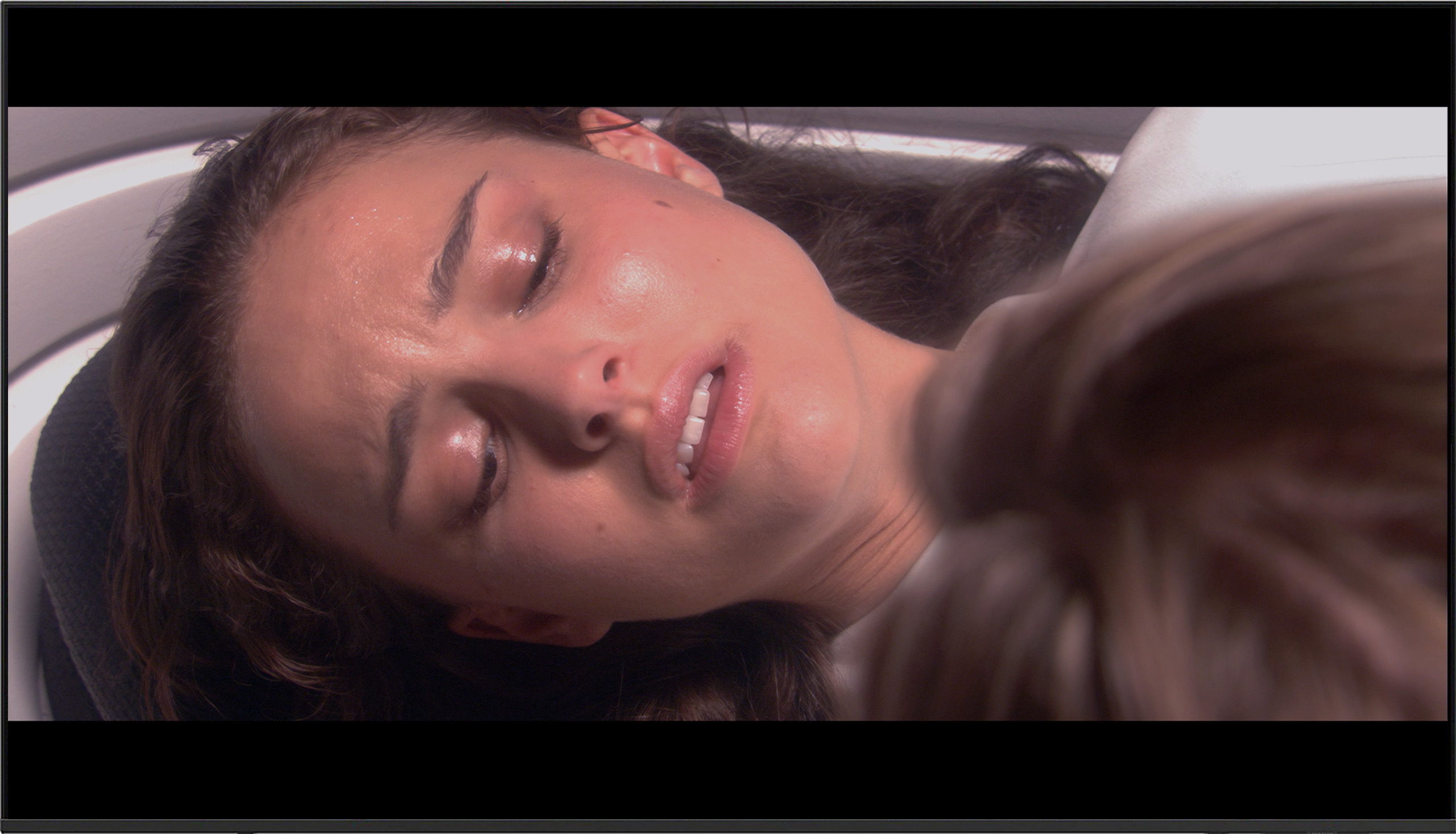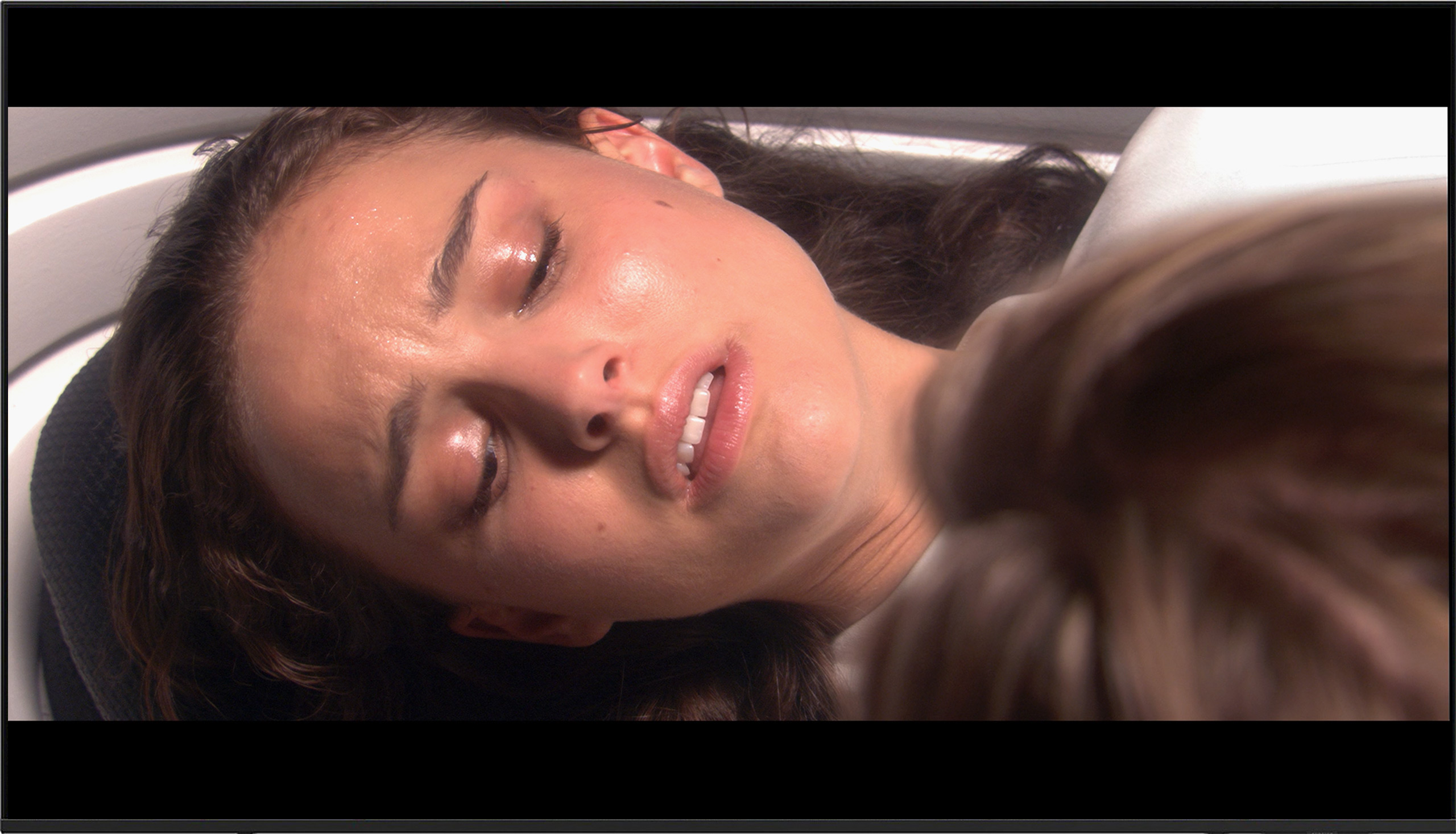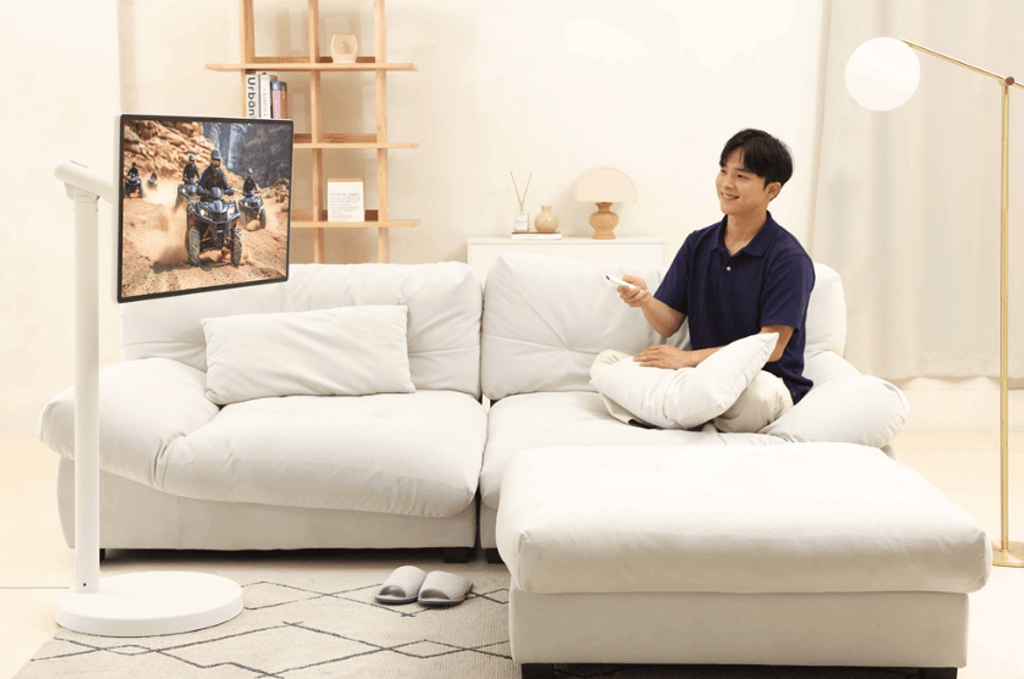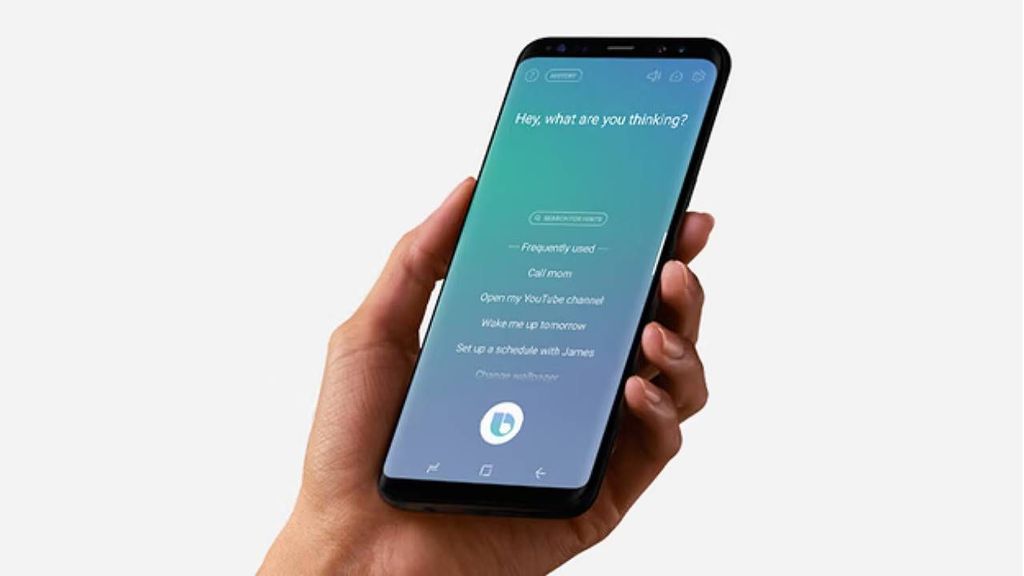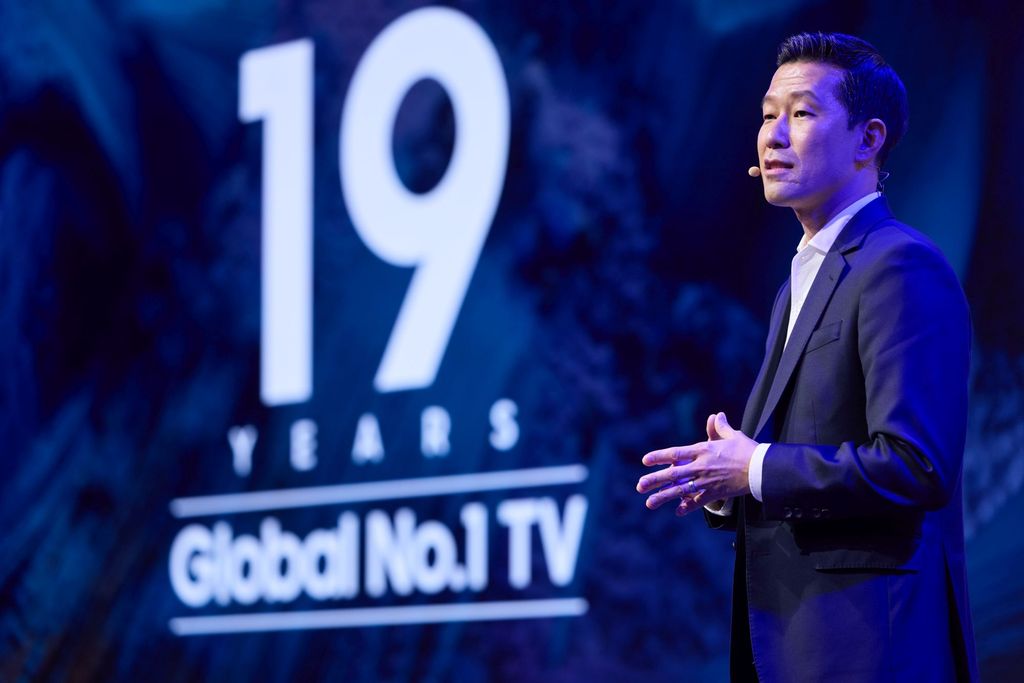- Matching (Score)
- Our verdict
- Competing TVs
- TV appearance
- Where to buy
- Contrast and black detail
- HDR effect quality
- Factory color reproduction
- Color reproduction after calibration
- Smoothness of tonal transitions
- Image scaling and smoothness of tonal transitions
- Blur and motion smoothness
- Console compatibility and gaming features
- Input lag
- Compatibility with PC
- Viewing angles
- Daytime performance
- TV features
- Apps
- Playing files from USB
- Sound
- Panel details
Samsung U8000F (IPS) Review
U8000F / U8092F
Available screen sizes:
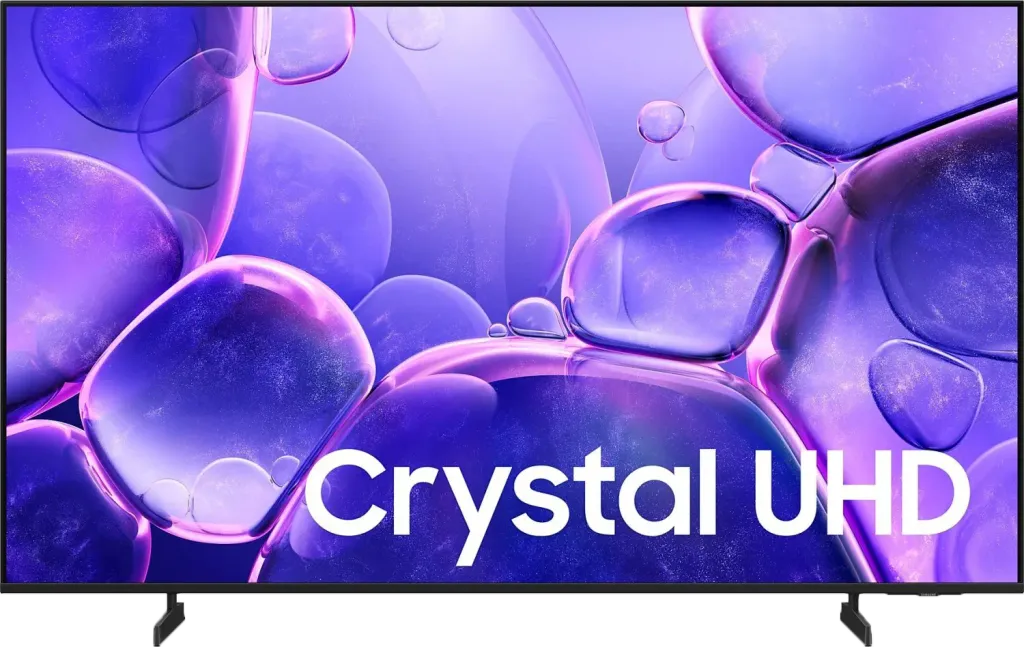
Complete the survey to find out the result
Panel type: LCD IPS Refresh rate: 60Hz Brand: SAMSUNG Resolution: 3840x2160 System: Tizen Model year: 2025
Samsung U8000F is one of the more affordable models from this brand in 2025. At first glance, it may entice with its appearance and the well-known logo from Korea, but it’s worth checking how it performs in practice – especially since we have an IPS panel here, which rarely guarantees good blacks. Does U8000F offer anything despite that? Let’s find out!
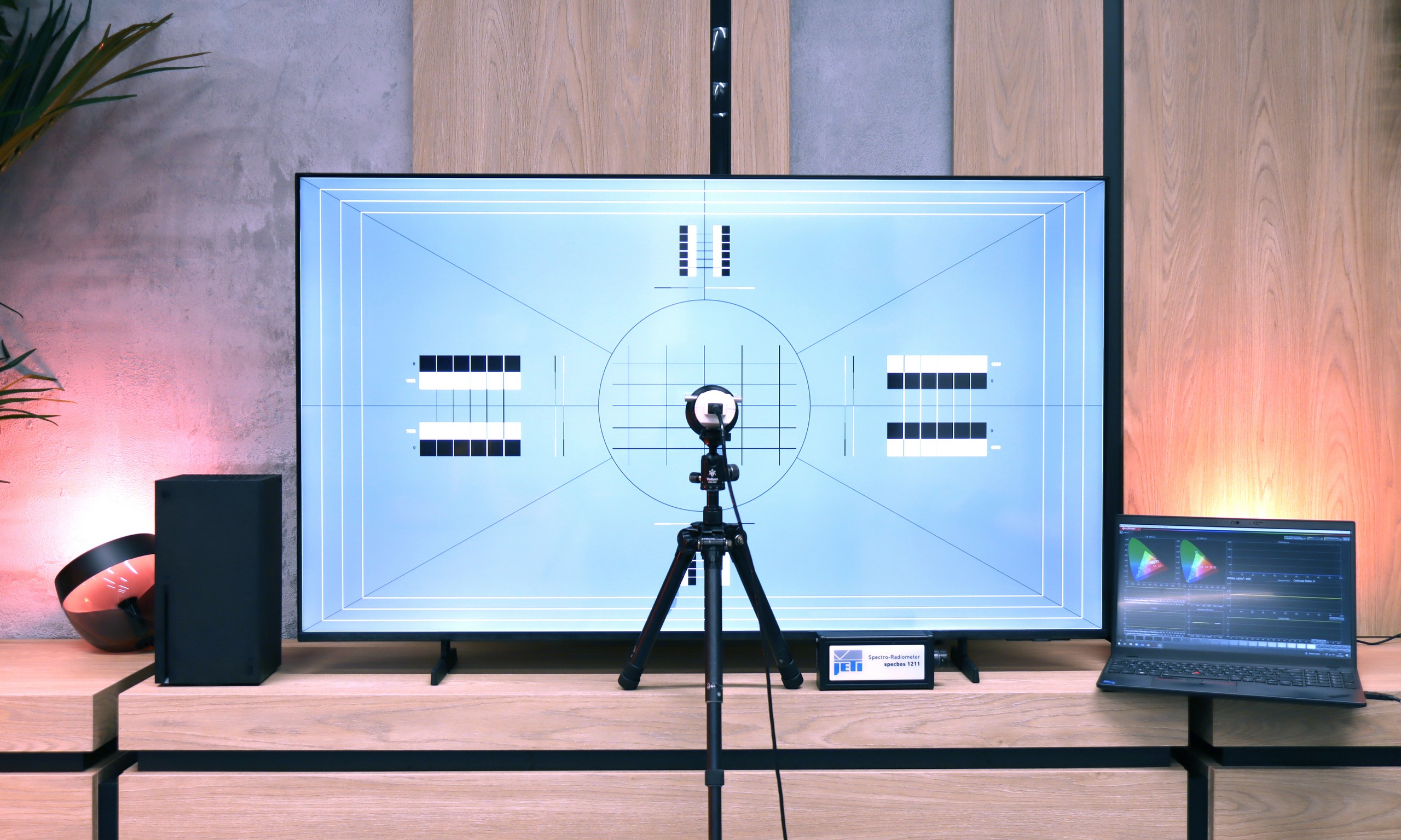
SAMSUNG U8000F - Our verdict
5.3
Overall rating
The U8000F is a very basic television that may find its buyers among those looking for the cheapest Samsung 4K with Smart TV. And that is exactly its purpose. Thanks to the Tizen system, this model really offers quite a lot in terms of smart features – the number of applications and possibilities may attract those who want a reasonably intelligent device at the lowest possible price. In terms of picture quality – it is average, which is not surprising in this class. Nevertheless, a few pluses can be found: fairly good viewing angles will work well for traditional TV watching from different parts of the room, and the basic features for gamers (like VRR and ALLM) may be sufficient for typical "Sunday" gamers. The PC mode also deserves a plus – the television handles displaying fonts very well, so it can also serve as a cheap monitor. Of course, this is not a model that can be recommended to everyone "sight unseen." But if someone is looking for an affordable Samsung with a 4K resolution and a solid Smart system, then the U8000F is just that kind of device.
Advantages
Advanced Smart system: Tizen
Good viewing angles (IPS Matrix)
Great for text work - displays fonts excellently
Low input lag
Basic features for gamers - VRR and ALLM
Disadvantages
Low brightness
Very poor black and contrast (IPS panel)
Worse appearance than its predecessor
Infrared remote
Movies and series in UHD quality
4.9
Classic TV, YouTube
4.8
Sports broadcasts (TV and apps)
5.2
Gaming on console
6.1
TV as a computer monitor
6.0
Watching in bright light
3.4
Utility functions
5.3
Apps
8.7
Sound quality
5.7
Complete the survey to find out what fits your preferences
SAMSUNG U8000F - Competing TVs in this price range
SAMSUNG U8000F - TV appearance
HDMI inputs: 3 x HDMI 2.0, 0 x HDMI 2.1 Outputs: eARC (HDMI), ARC (HDMI) Network Interfaces: Wi-Fi 2.4GHz, Wi-Fi 5GHz, Ethernet (LAN) 100Mbps
Build quality: Average
Stand type: Legs
Bezel color: Black
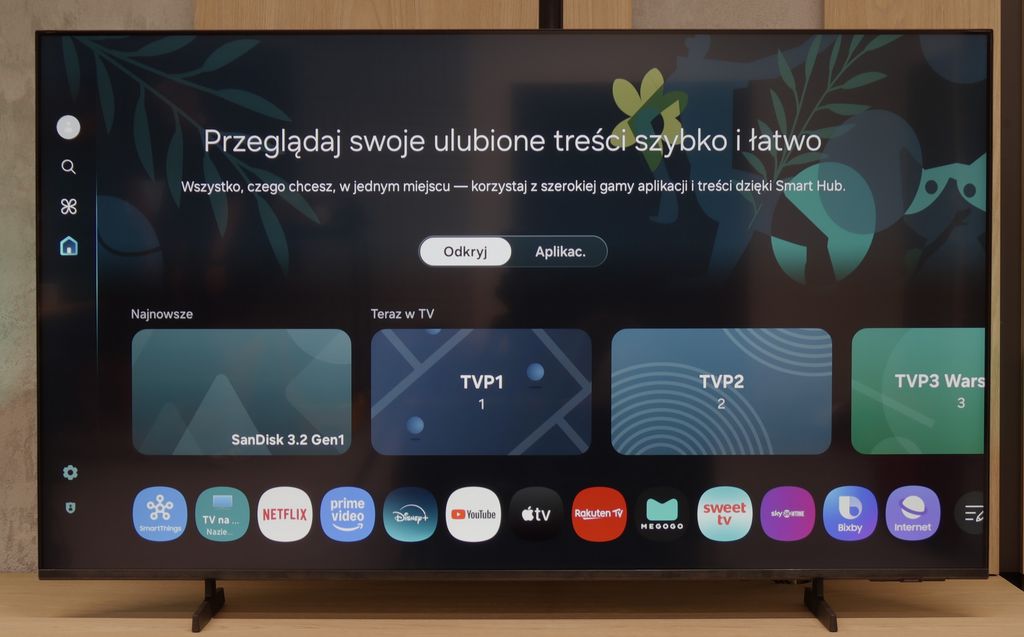
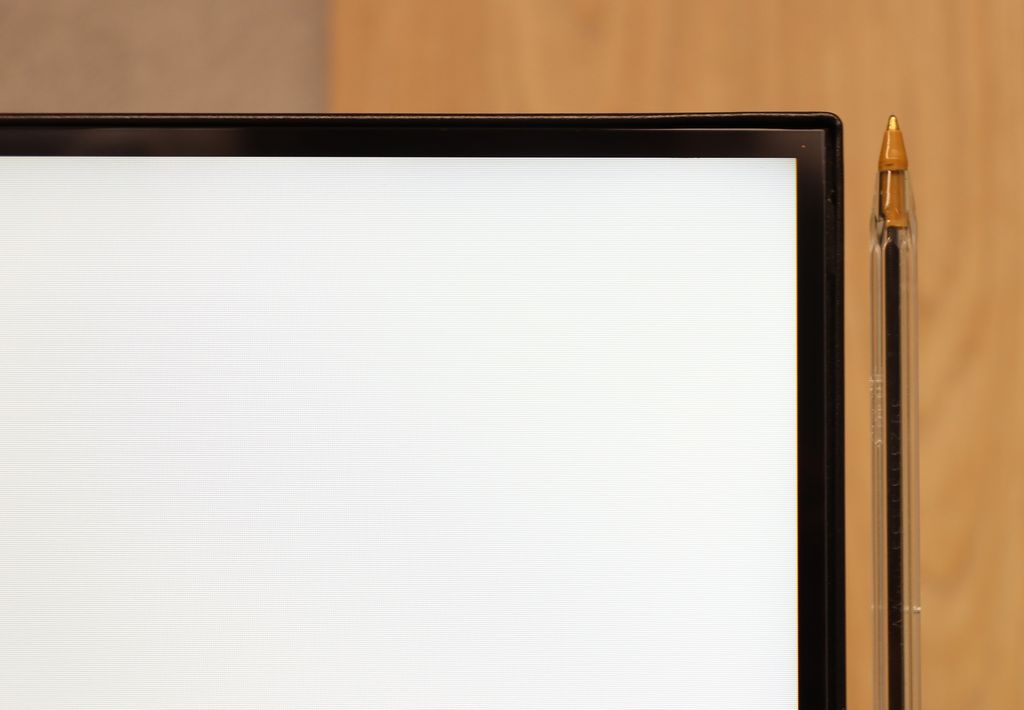

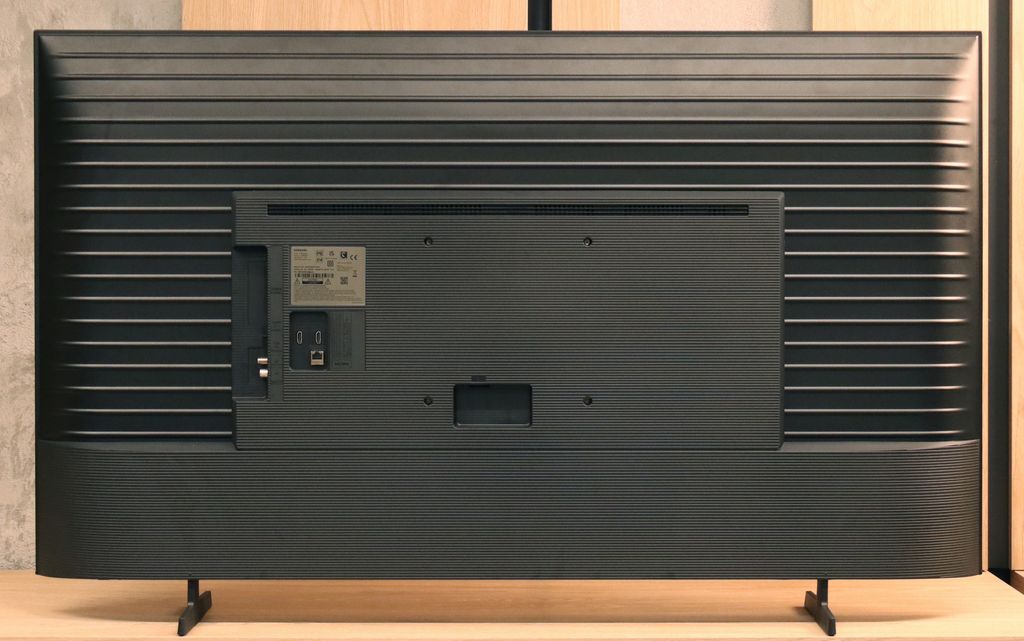
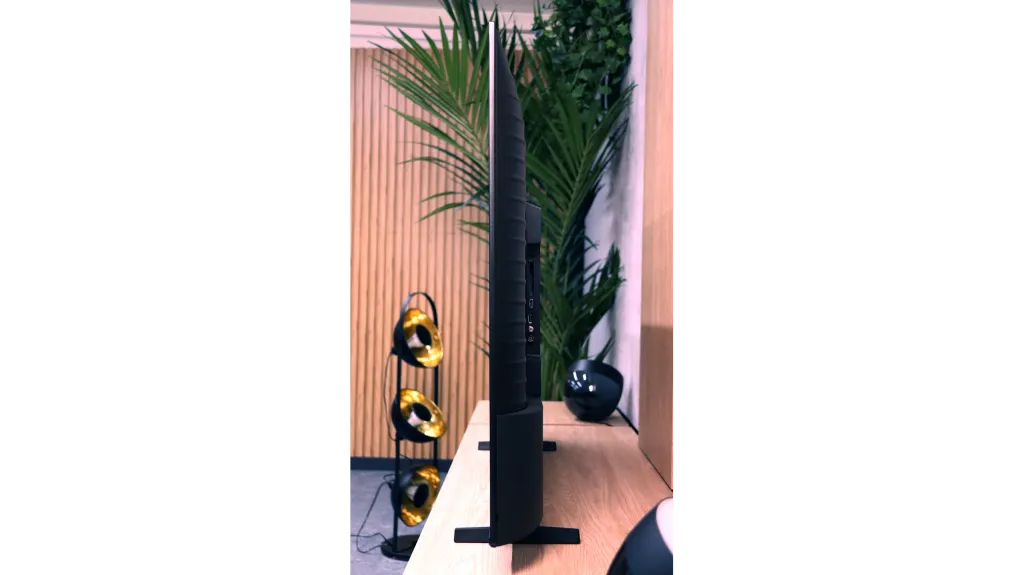

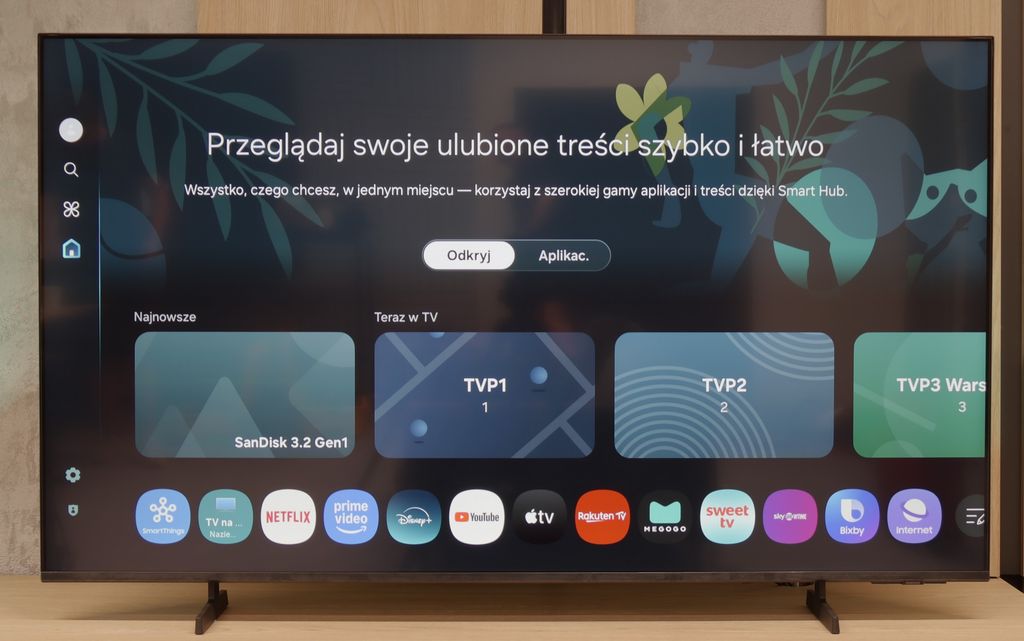
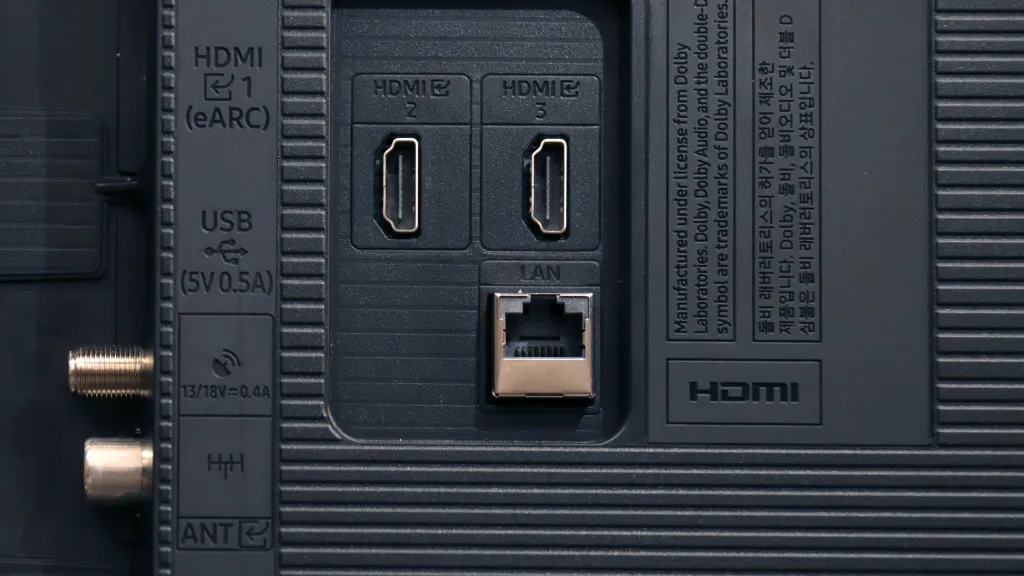


Stand: Fixed
Flat design: No
Accessories: Stand
If you thought that the U8000F is a direct successor to the DU8000 model, then unfortunately – you will be disappointed. At least in terms of appearance. The model from 2025 has clearly "swelled" and has taken a step back in design compared to a few years ago. What was once a fairly sleek and modern device has become rather clunky.
As a consolation – from the front, the television still looks quite modern. It has thin metal frames a few mm thick and presents itself better than typical, very budget constructions. However, overall, it is a very basic design. It's a shame, because over the past few years, the 8000 series belonged to the more streamlined ones. So if someone was simply looking for a "nice television," the new model from 2025 is unlikely to catch their attention.
Buy at the best price
Select size:
SAMSUNG U8000F - Contrast and black detail
1.1/10
Local dimming function: No

Result
900:1

Result
800:1

Result
700:1

Result
700:1

Result
650:1
Visibility of details in the lights:
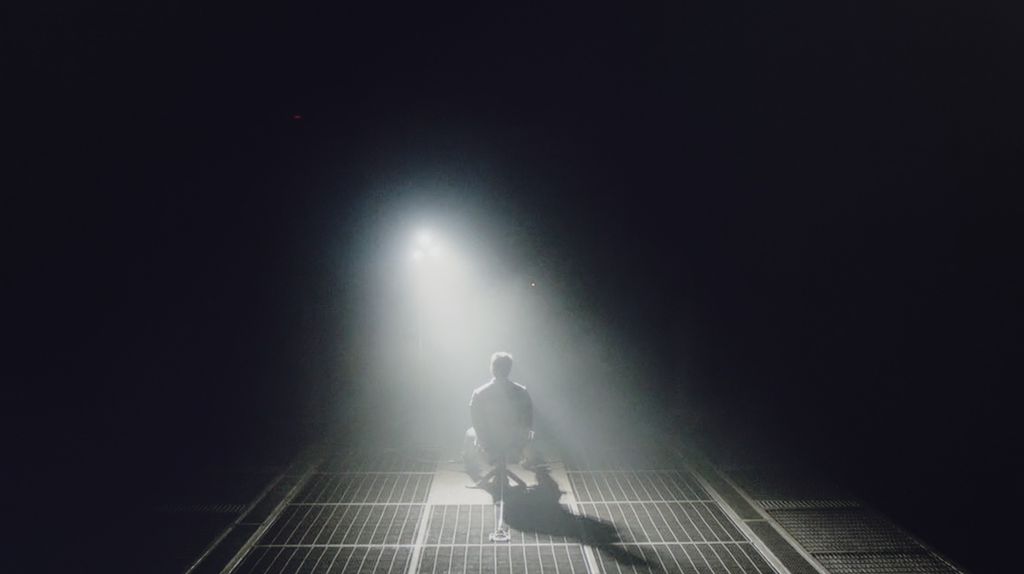
The Samsung U8000F, more specifically the U8092F model in the 55-inch version, is equipped with an IPS panel. Let's be honest – this is not the best choice when it comes to displaying blacks and contrast correctly. The results in this category are just poor. The contrast is abysmal, and watching dark scenes with any kind of "cinematic" effect is nearly impossible. Additionally, the fact that the television lacks local dimming doesn’t help, making it hard to achieve better results. The only thing that deserves praise is the fairly decent uniformity of the panel – but that's more of a small consolation. Overall, it's not good. If you care about deep blacks and reasonable contrast, it's definitely better to go for the variant with a VA panel, which performs significantly better in this particular series.
Halo effect and black detail visibility:
SAMSUNG U8000F - HDR effect quality
3/10
Supported formats: HDR10, HDR10+, HLG Color gamut coverage: DCI P3: 81.0%, Bt.2020: 59.0%
Luminance measurements in HDR:

Result
191 nit

Result
224 nit

Result
241 nit

Result
79 nit

Result
234 nit
Better does not mean good – and that perfectly summarizes the capabilities of the U8092F when it comes to displaying bright movie scenes in HDR mode. The brightness of the panel is just under 250 nits, which is definitely too little to enjoy any lighting effects. An interesting situation was noted during the measurement of the fourth scene from the movie Sicario 2 – the television clearly dimmed the entire screen in an attempt to achieve better black levels (which are still weak). One could even suggest that the device uses some form of "global dimming," but unfortunately, the results are still very poor. To make matters worse, the television does not support a wide color gamut – the coverage of the DCI-P3 space is about 80%, so there’s no hope for truly vibrant colors. HDR images here look rather like lightly brightened SDR, and that's the form we would suggest sticking to when it comes to this television.
Scene from the movie “Pan” (about 2800 nits)

Scene from the movie “Billy Lynn” (about 1100 nits)

We also checked how the U8092F performs not only in synthetic tests but also during real viewing sessions – after all, movies are what people watch most often, not test patterns. And here... the television pleasantly surprised us. After what we saw in the synthetic tests, we didn't expect much, and yet the viewing sessions turned out to be quite decent.
Despite the less saturated colors – and sometimes slight color inaccuracies – the movie reception was quite enjoyable. The television tried to reproduce the brightest elements, sometimes successfully, sometimes less so – for example, clouds and the sun could blend into one patch, but in other scenes, they maintained clear differences. Perhaps this is due to the HDR tone mapping feature, which we definitely recommend setting to active. The image seemed less oversaturated at that point, but showed more details – especially in bright areas like the one we tested from the movie "The Meg."
HDR luminance chart:
HDR luminance
The image quality in HDR10 and HDR10+ modes on the tested model U8092F leaves a lot to be desired. Although the television supports dynamic metadata, the differences between both versions are minimal – in HDR10+ you can indeed notice slightly more details (although this isn’t visible in our test photo), but the overall impression is still poor. This is disappointing, especially since HDR10+ as a format has great potential – by adapting parameters to each scene, it can significantly improve contrast and visibility of details, particularly on screens with limited brightness. Its growing popularity – presence on platforms such as Prime Video, Netflix, and soon also Disney+ – is definitely good news for viewers. It’s just a pity that in the case of U8092F, the implementation of this format does not allow for fully utilizing its capabilities.
Static HDR10

Dynamic: HDR10+

Factory color reproduction
6.5/10
The Samsung U8000F was tested in the best possible picture mode built into the TV, which is Filmmaker Mode. This mode should – at least in theory – offer a cinematic, reference-quality image without unnecessary enhancements. For SDR content (mainly HD/SD), the TV performed surprisingly well straight out of the box. White balance errors hovered around a value of 3, which is roughly at the threshold of perception. The only complaint could be about brightness management – the gamma chart showed a slight tendency to brighten or darken certain areas, but overall it performed quite well for this price segment.
Unfortunately, it looks much worse in HDR mode. Although the white balance wasn't terrible, the TV had significant color errors – particularly noticeable on the Color Checker chart, where almost every sample landed outside the target point. The HDR image simply looks unnatural, and colors can be shifted, dull, or too cool. This largely stems from the fact that the U8000F does not support a wide color gamut (DCI-P3). The TV is physically incapable of displaying accurate colors in HDR standard – and this unfortunately shows in every more demanding material.
Color reproduction after calibration
7.5/10
Although the U8000F offered quite a decent picture in SDR right out of the box, we were able to adjust it a little more. We managed to eliminate a slightly purplish tint and calibrate the gamma to a more reasonable level. However, the television still tends to overemphasize the smallest and brightest parts of the image – the gamma chart shows a characteristic "dip" that is difficult to completely correct.
Unfortunately, the situation looks worse in HDR. It's hard to talk about any significant improvement here – the television is simply not designed for HDR content. We tried to adjust the picture in the advanced settings, but despite everything, the color errors remained quite large – a delta E above 7 indicates noticeable deviations. It's a bit of a shame, but that's the charm of a budget design. In SDR, the U8000F performs just fine, while HDR is simply not its league.


SAMSUNG U8000F - Smoothness of tonal transitions
9/10
Another important thing to pay attention to when assessing image quality is the smoothness of tonal transitions – that is, how well the television handles blending colors and shades. Here, the Samsung U8092F performs... almost perfectly. On the tested screens, there are no visible banding issues, no problems with color gradients, and the overall image is not artificially sharpened, which unfortunately happens in many televisions of this class. The image looks natural and very clean. We noticed minimal issues with the brightest scenes, but that’s more of nitpicking that only a very discerning eye would catch.


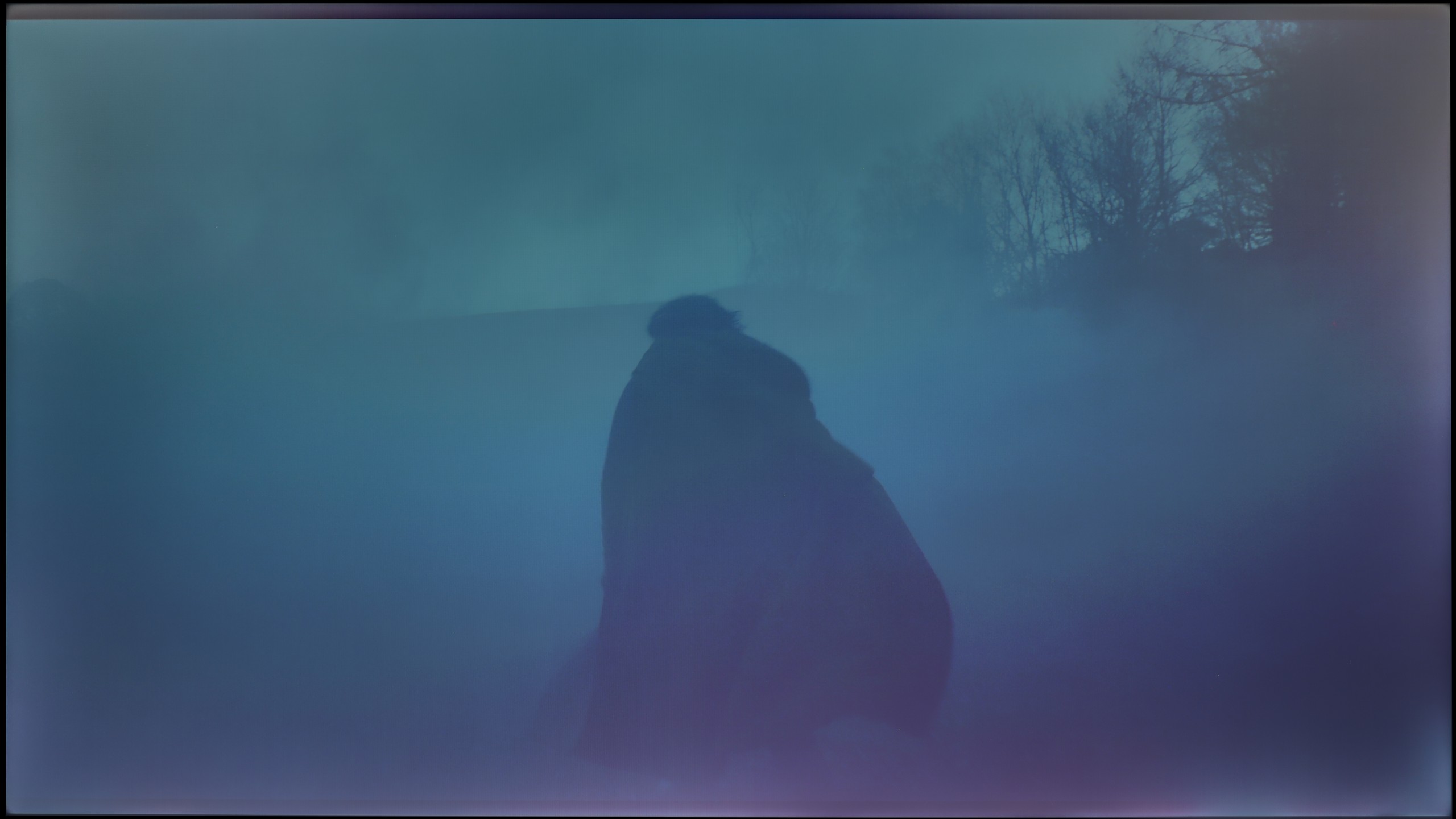





Image scaling and smoothness of tonal transitions
5/10
Smooth transition function
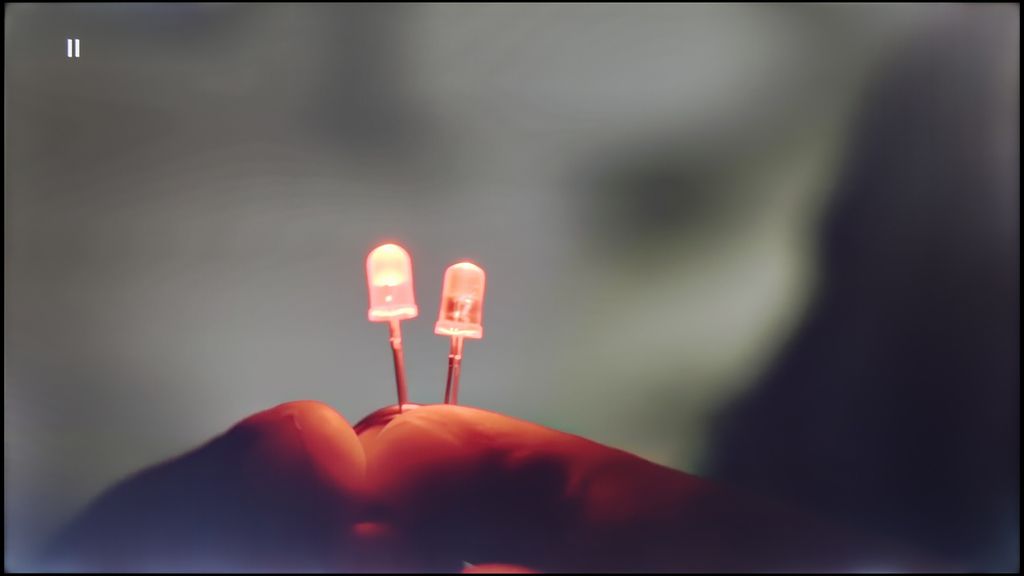
Image without overscan on the SD signal

When it comes to how the Samsung U8000F handles lower-quality materials, we have to admit that Samsung has made progress compared to its predecessor from last year – the DU7192 model, which theoretically occupies the same place in the lineup.
This year's model is equipped with a function to improve the fluidity of tonal transitions, which has been implemented much better than last year. Yes, the television still uses quite strong algorithms that can distort details or remove film grain, but even so – it can be confidently said that it works effectively.
However, not everything went perfectly. The U8000F has noticeable issues with slight frame cutting when watching very old content in very low resolution. If someone plans to play their old VHS tape, they should be prepared for the image to appear slightly “cut off.”
SAMSUNG U8000F - Blur and motion smoothness
4.5/10
Maximum refresh rate of the panel: 60Hz
Film motion smoothing option: Yes
Blur reduction option: No
BFI function 60Hz: Yes, 60Hz (image flickers)
Brightness drop with BFI: 48%
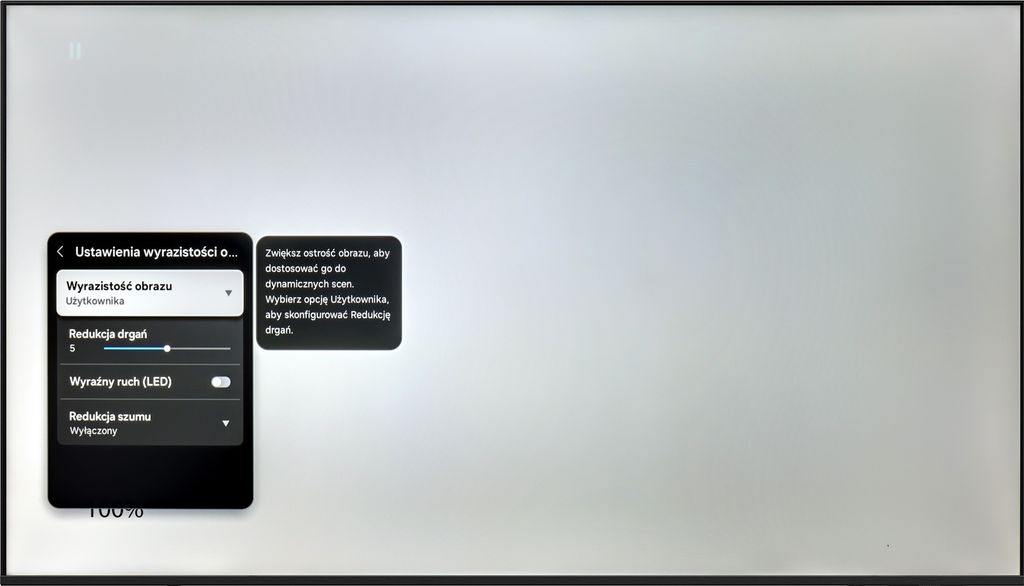
The Samsung U8000F is equipped with a 60 Hz panel, so right from the start, it’s clear that we shouldn’t expect any miracles. This is simply the standard in this class – sufficient for everyday viewing, but without any fireworks.
The TV offers one motion smoothing slider – a feature called "Motion Blur Reduction", which allows us to adjust the smoothness of the image in movies. Higher settings provide a more "theatrical" and smoothed effect, while lower settings help retain the original character of the film with a slight 24p effect. Interestingly, there is a feature called "Clear Motion LED", which is a BFI mode – that inserts black frames between the frames of the picture to improve motion clarity. However, in practice, the screen flickers significantly when activated, and it should be regarded more as an experiment than something that realistically enhances gaming comfort.
Blur (native resolution, maximum refresh rate):

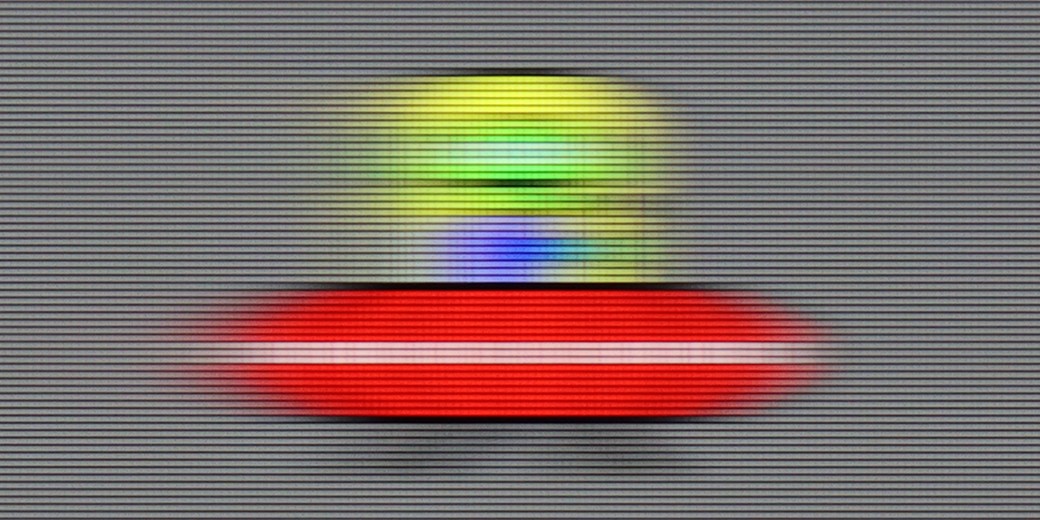
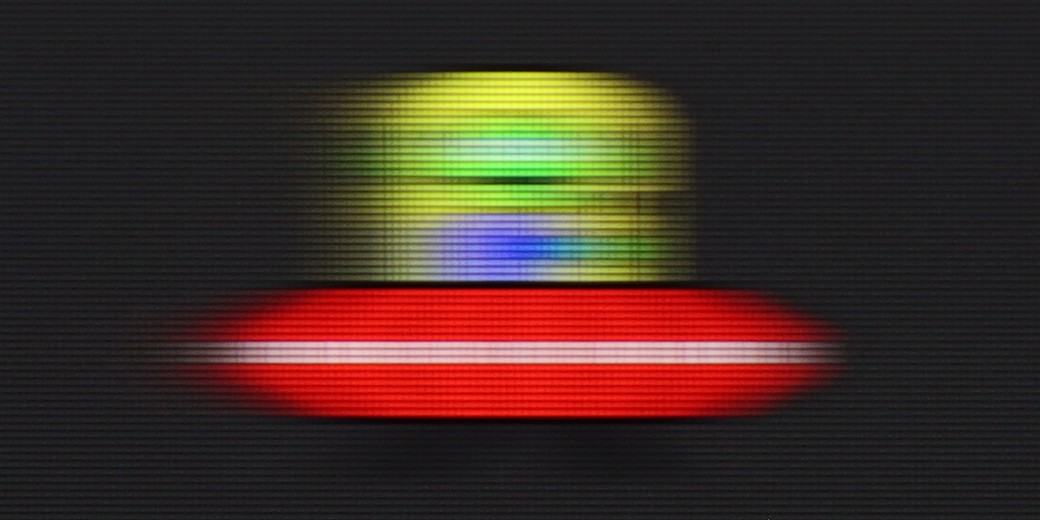
Motion blur can be described as low to medium. IPS panels are generally associated with average response times and relatively small smudges – and that's how the U8092F performs. It's quite good, although definitely not the best.
SAMSUNG U8000F - Console compatibility and gaming features
4/10
ALLM: Yes
VRR: Yes
VRR range: 48 - 60Hz
Dolby Vision Game Mode: No
Correct implementation of HGIG: No
1080p@120Hz: No
1440p@120Hz: No
4K@120Hz: No
Game bar: No
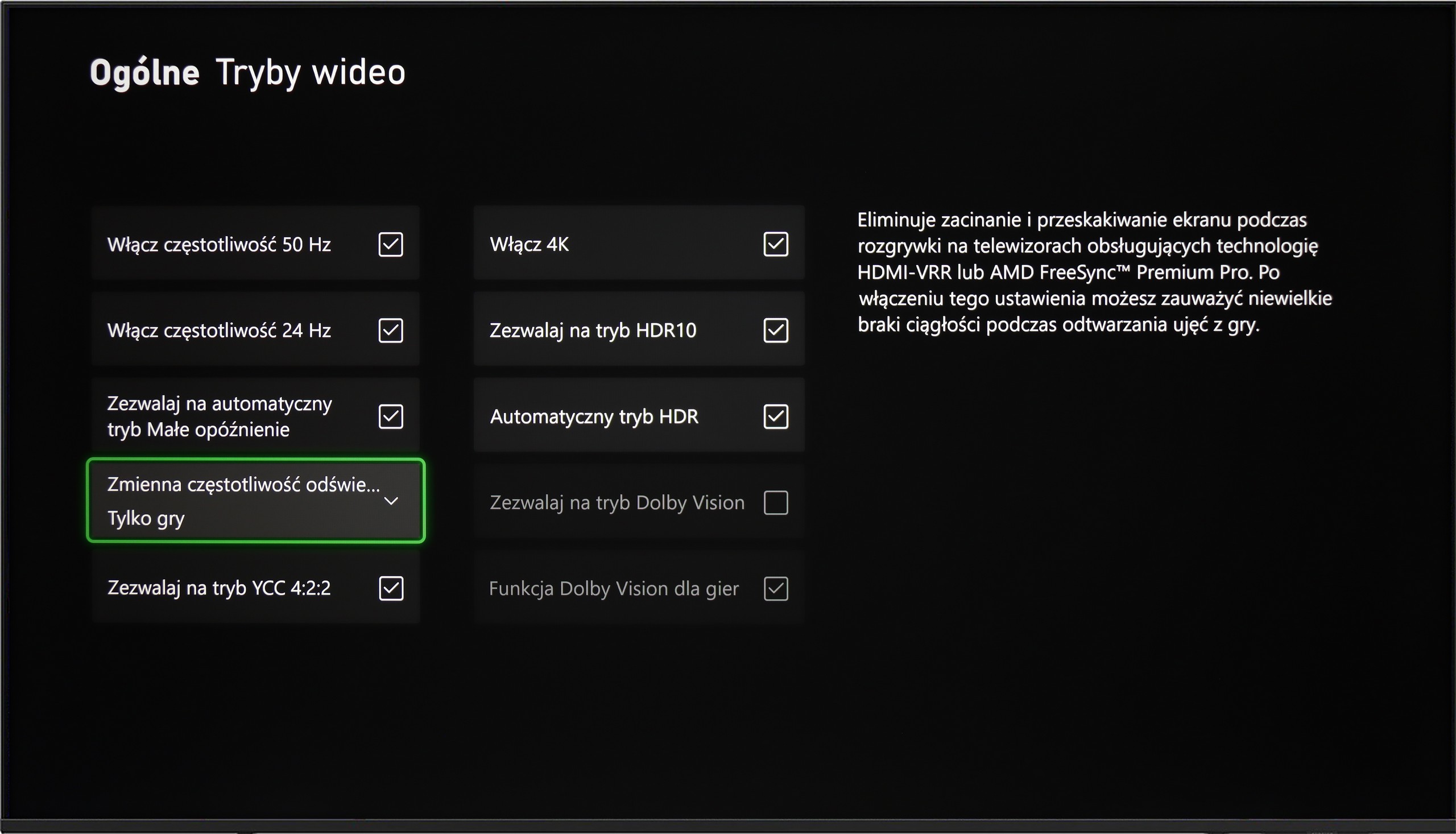

Samsung U8000F offers a basic set of features for gamers, which nonetheless may be sufficient for less demanding users. We have an automatic game mode here – when a game is launched on the console, the TV automatically switches to low latency mode, which significantly improves response time. We also find the VRR feature, or variable refresh rate, which operates within a range of 48 to 60 Hz. This means that both Xbox and PS5 will not produce the "tearing" effect, as long as we stay within this range.
And unfortunately, that's about it for the advantages. Add-ons like Game Bar or higher refresh rates are reserved for the higher models of Samsung from the 2025 line. In theory, the TV also supports the HGiG feature, which should adjust HDR images to the intentions of game developers. Unfortunately – even though this feature appears in promotional brochures and store materials – its configuration on the Xbox console turned out to be... impossible in practice.
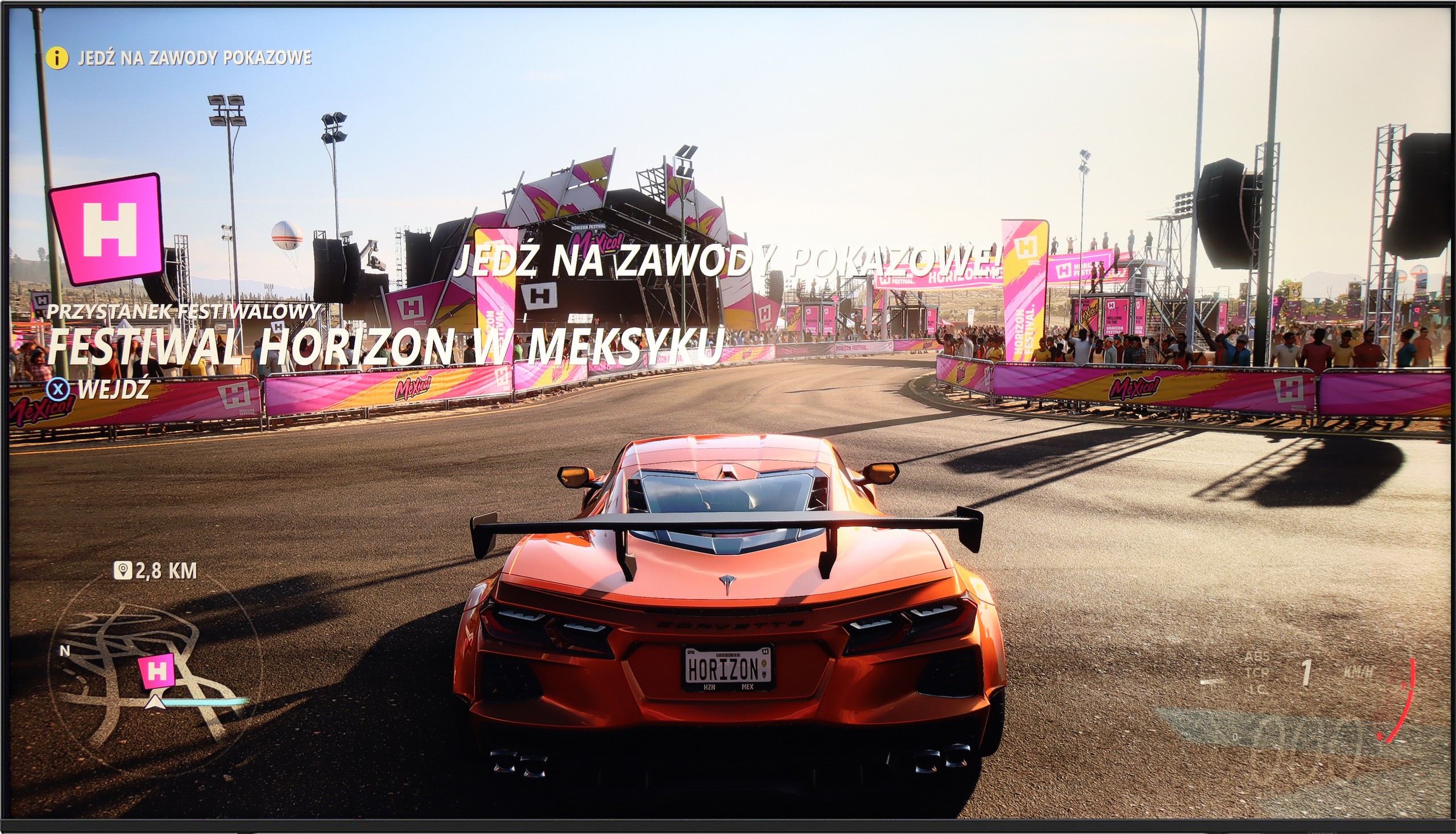


SAMSUNG U8000F - Input lag
10/10
The Samsung U8092F performed phenomenally in our input lag tests. Regardless of the resolution or mode, the results were very low, which is truly impressive for this price range. It can be safely said that gaming on this television will not cause irritation due to significant delays between what we do on the controller and what we see on the screen. For most gamers, even those who are more demanding, this result should be more than satisfactory.
| SDR | HDR | Dolby Vision |
|---|---|---|
| 1080p60: 12 ms | 2160p60: 12 ms | |
| 2160p60: 12 ms |

SAMSUNG U8000F - Compatibility with PC
6/10
Chroma 444 (maximum resolution and refresh rate): Yes
Font clarity: Very Good
Readability of dark text and shapes: Very Good
Input lag in PC mode (4K, maximum refresh rate): 12ms
Matrix subpixel arrangement: BGR
Max refresh rate: 60Hz
G-Sync: No
Working on a computer using this TV is a real pleasure. The Samsung U8092F supports chroma 4:4:4, and thanks to the layout of the sub-pixels in the IPS panel, text readability – regardless of color or size – is very, very good. The TV is also suitable for occasional gaming on PC, mainly due to its low input lag. However, one must keep in mind that the G-Sync feature does not work on this model, which is strange because VRR worked without any issues when it comes to the console.
SAMSUNG U8000F - Viewing angles
7/10
Brightness drop at an angle of 45 degrees: 34%
The viewing angles on the Samsung U8092F are very good – as is expected from an IPS panel. The picture doesn’t lose much in brightness or color saturation, even at greater angles from the axis. Of course, it's not on the level of organic screens – but it’s entirely sufficient for comfortably watching the image at an angle, e.g., from the side of the sofa.
SAMSUNG U8000F - Daytime performance
3.4/10
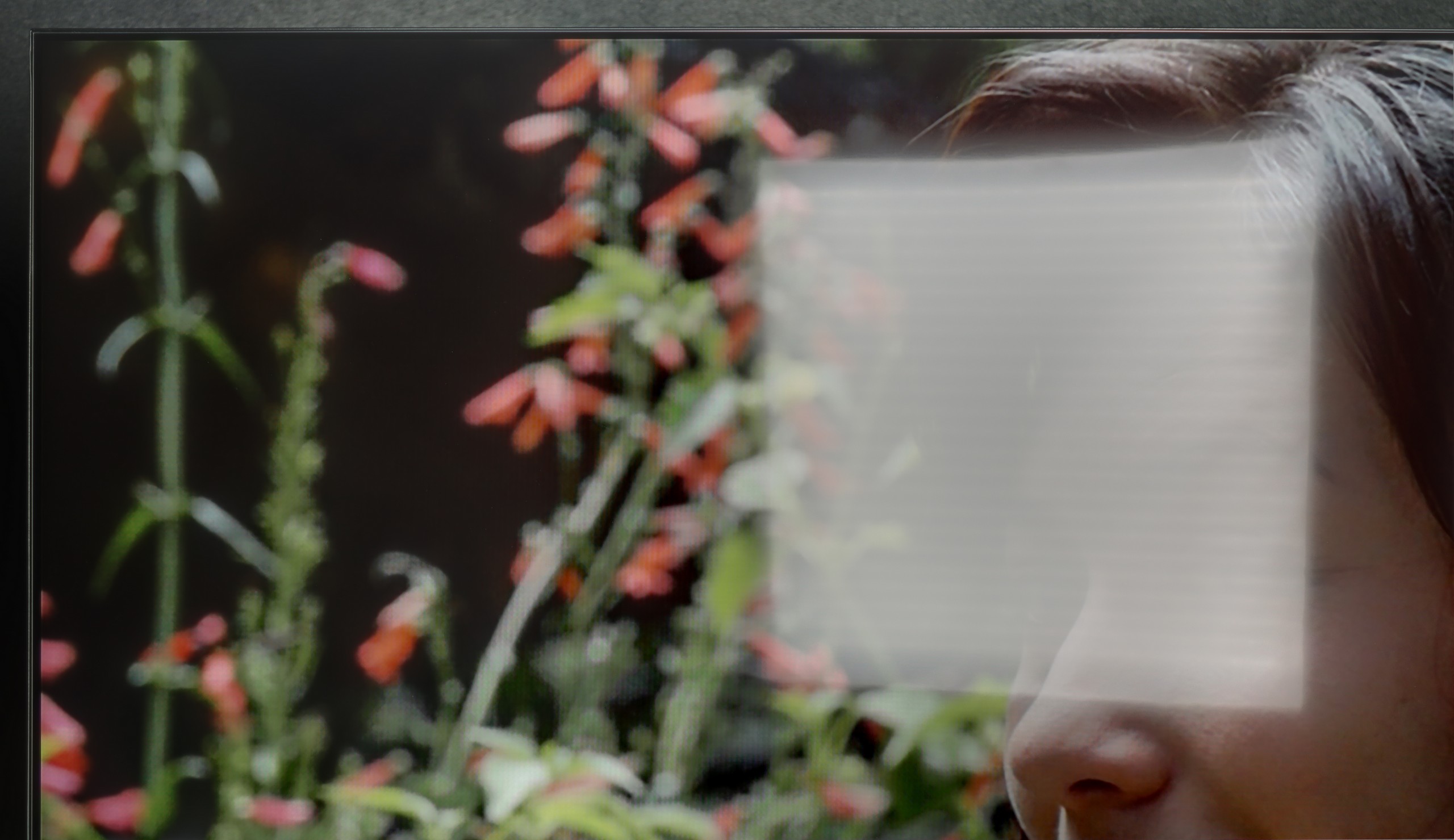
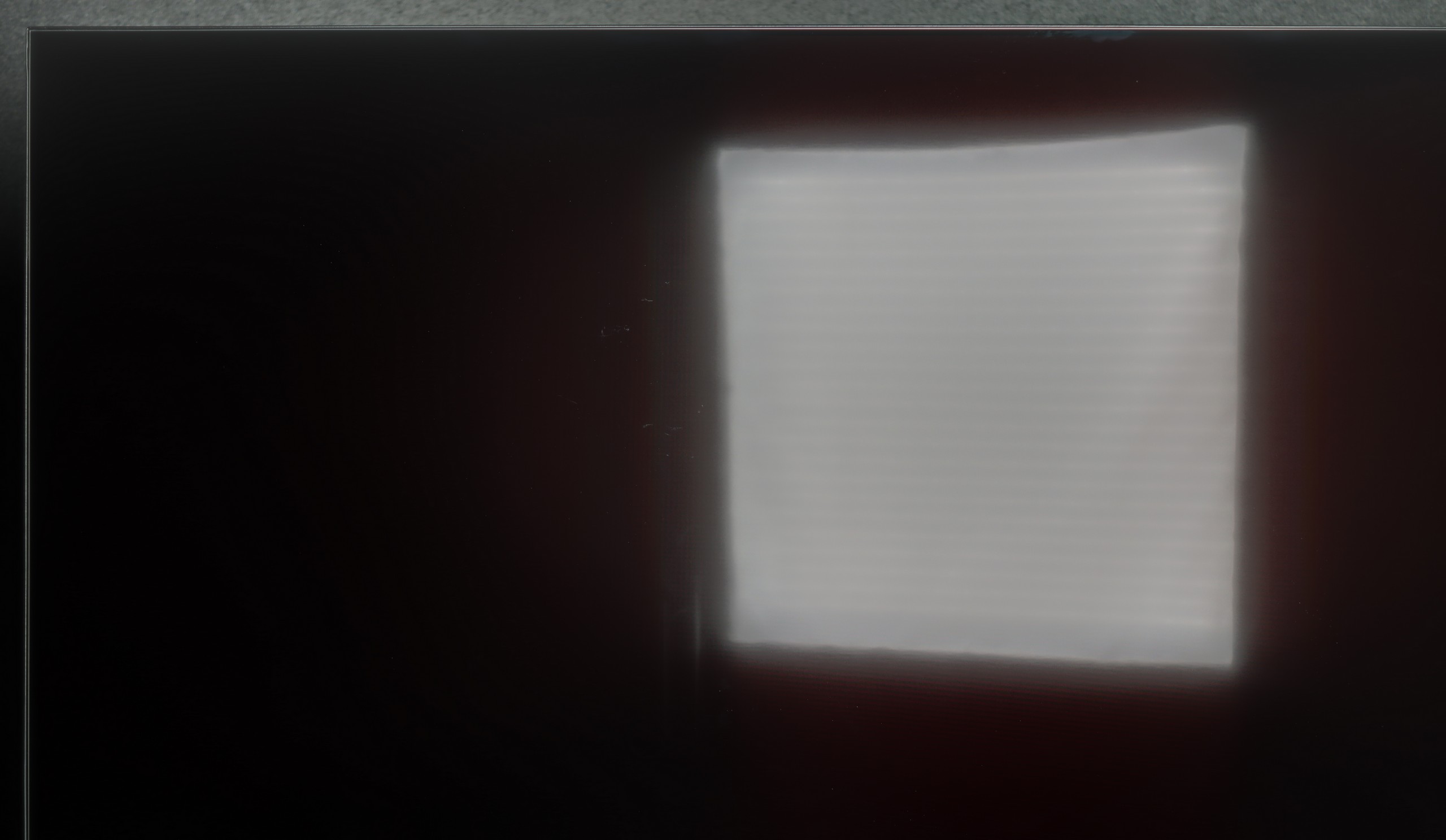
Panel finish: Satin
Reflection suppression: Average
Black levels during daytime: Good
Thanks to the satin coating of the Samsung U8092F matrix, it handles glare quite well. The screen does not act like a mirror, and the colors – considering the capabilities of this class of devices – remain fairly saturated, even in somewhat brighter conditions. Unfortunately, the coating itself cannot perform miracles. The television is simply too dark to effectively penetrate very challenging lighting conditions. If we place it in front of a light source (e.g., a large window or a strong lamp) – unfortunately, one must consider that not everything will be clearly visible on it.
Panel brightness
Average luminance SDR
Samsung U8000F (IPS): 218 cd/m2
SAMSUNG U8000F - TV features
5.3/10
System: Tizen
System performance: Decent
- HDMI inputs: 3 x HDMI 2.0, 0 x HDMI 2.1
- Outputs: eARC (HDMI), ARC (HDMI)
- Network Interfaces: Wi-Fi 2.4GHz, Wi-Fi 5GHz, Ethernet (LAN) 100Mbps
- TV reception: DVB-T, DVB-T2, DVB-S, DVB-S2, DVB-C
Classic features:
Recording to USB (terrestrial TV): No
Recording programming: No
Picture in Picture (PiP): No
RF remote control (no need to aim at the screen): Infrared
Backlit remote control: No
Teletext: Yes
Audio only mode: Yes
Bluetooth headphones support: Yes
Simultaneous Bluetooth headphones & TV audio: Yes
Smart features:
AirPlay: Yes
Screen mirroring (Windows Miracast): Yes
Voice search: No
Voice search in native language: No
Ability to connect a keyboard and mouse: Yes
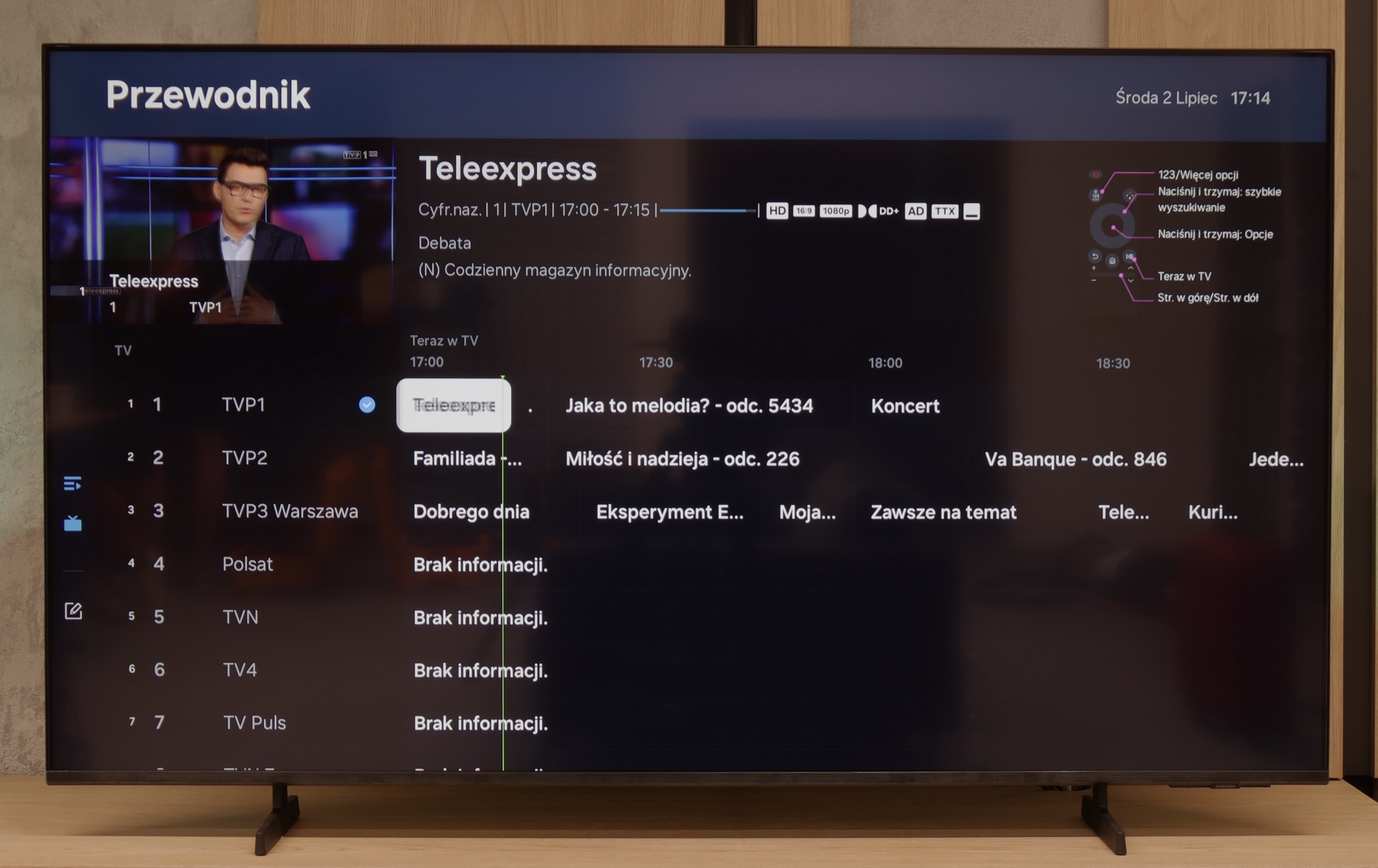


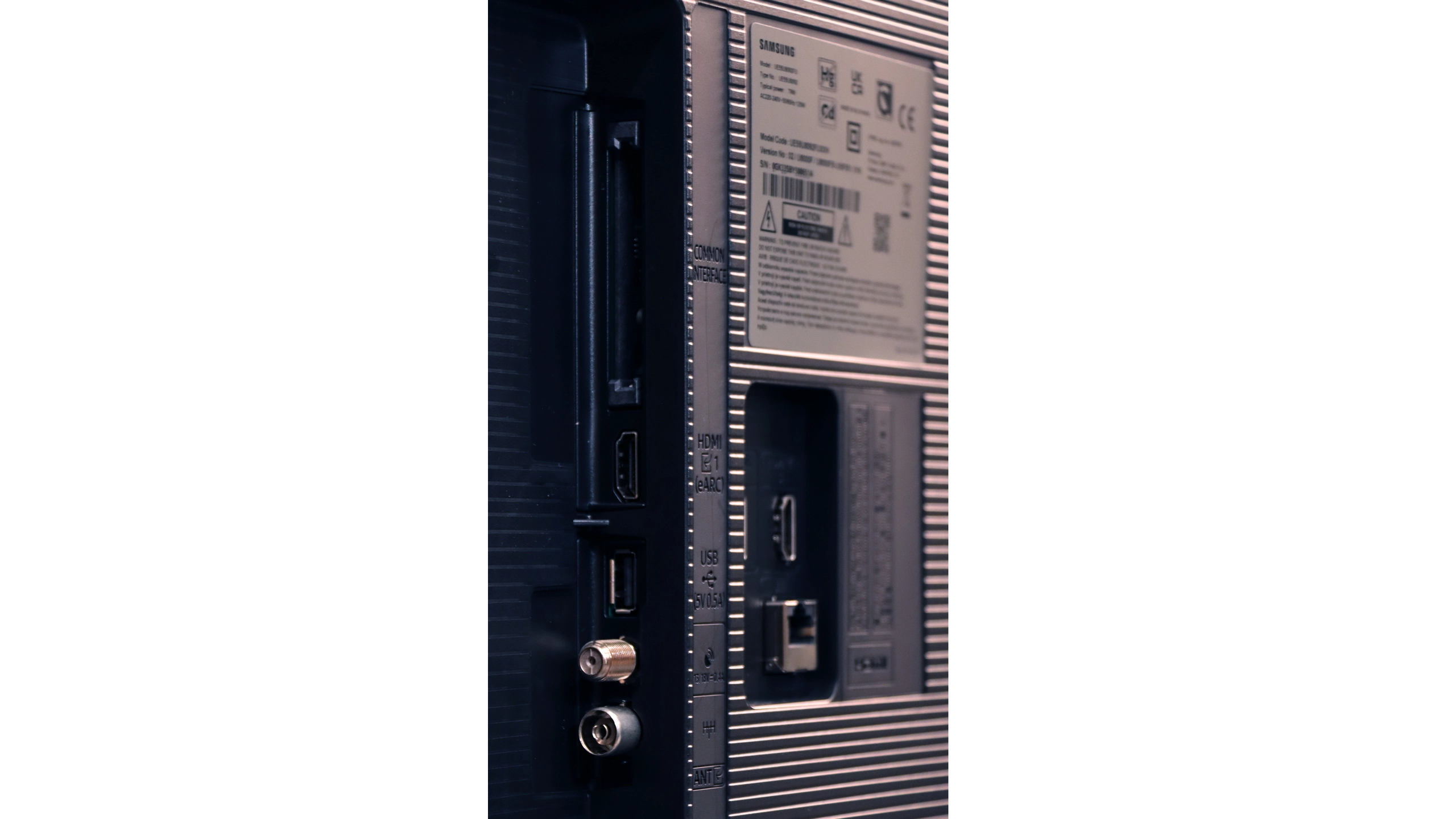




Samsung U8092F – like all this year's models from this brand – runs on the Tizen operating system. The system itself is really well developed: we have access to many applications (though not all), a well-developed smart home support, and various add-ons, including exclusive Samsung apps. There are also features like AirPlay or Chromecast, which make it easy to connect a phone to the TV and transfer multimedia.
Unfortunately, since this is Samsung's cheapest series in 2025, the manufacturer did not decide to include a solar remote. In the package, we find a classic infrared remote, which visually resembles a newer version, but unfortunately lacks voice functions. As for typically "TV" features – it lacks recording functions and PiP (picture-in-picture) mode. On the plus side, however, HDMI eARC works well, allowing you to easily control devices from the set such as a decoder or soundbar – and it really works seamlessly.
Sound connection options
HDMI audio:
Other audio outputs:
Wireless audio:
Bluetooth: Yes
Supported audio formats (external HDMI eARC audio):
Dolby Digital Plus 7.1: Yes
Dolby True HD 7.1: No
Dolby Atmos in Dolby Digital Plus (JOC): Yes
Dolby Atmos in Dolby True HD: No
DTS:X in DTS-HD MA: No
DTS-HD Master Audio: No
Senior accessibility
Numeric keyboard on TV: No
Font size adjustment: Yes
Audio description: Yes
SAMSUNG U8000F - Apps
8.7/10























SAMSUNG U8000F - Playing files from USB
9.3/10
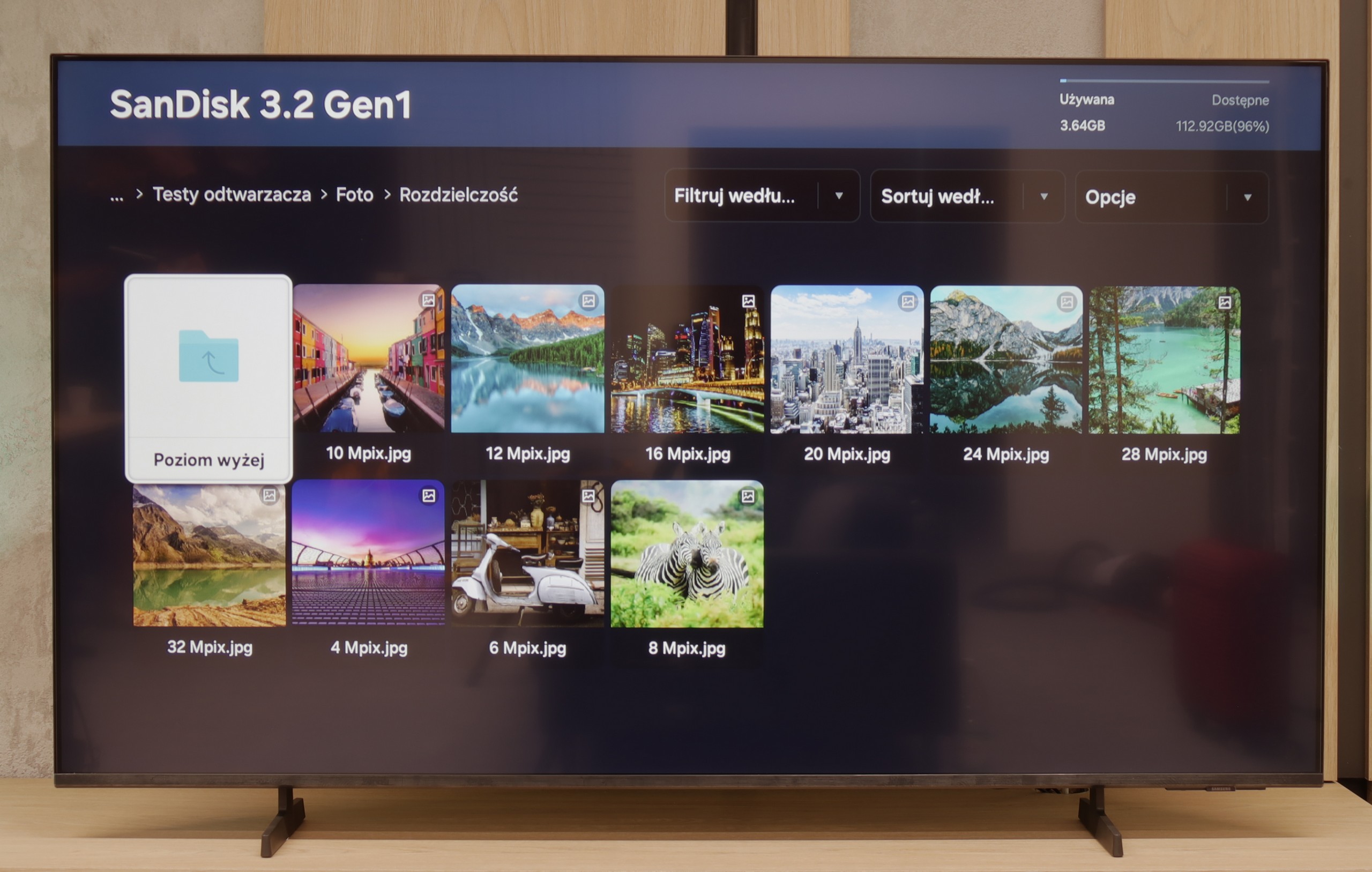
| Maximum photo resolution: | Supported photo formats: |
|---|---|
Samsung U8092F handles playback of files rather smoothly – the television supports most popular audio and video formats. Of course, it does not support Dolby Vision, but we simply will not find that in any Samsung model.
There may be some reservations regarding the support for external text files – those that the user would like to add as subtitles to a movie. During our tests, the television only played TXT files, and other formats, such as SRT or SUB, unfortunately did not work. This may not be a problem for everyone, but it's worth knowing. Perhaps this is an issue to be improved in the future with an update to the television's operating system.
SAMSUNG U8000F - Sound
5.7/10
-
Maximum volume
Supported codecs
(TV speakers)
Dolby Digital Plus 7.1
Dolby True HD 7.1
Dolby Atmos in Dolby Digital Plus (JOC)
Dolby Atmos in Dolby True HD
DTS:X in DTS-HD MA
DTS-HD Master Audio
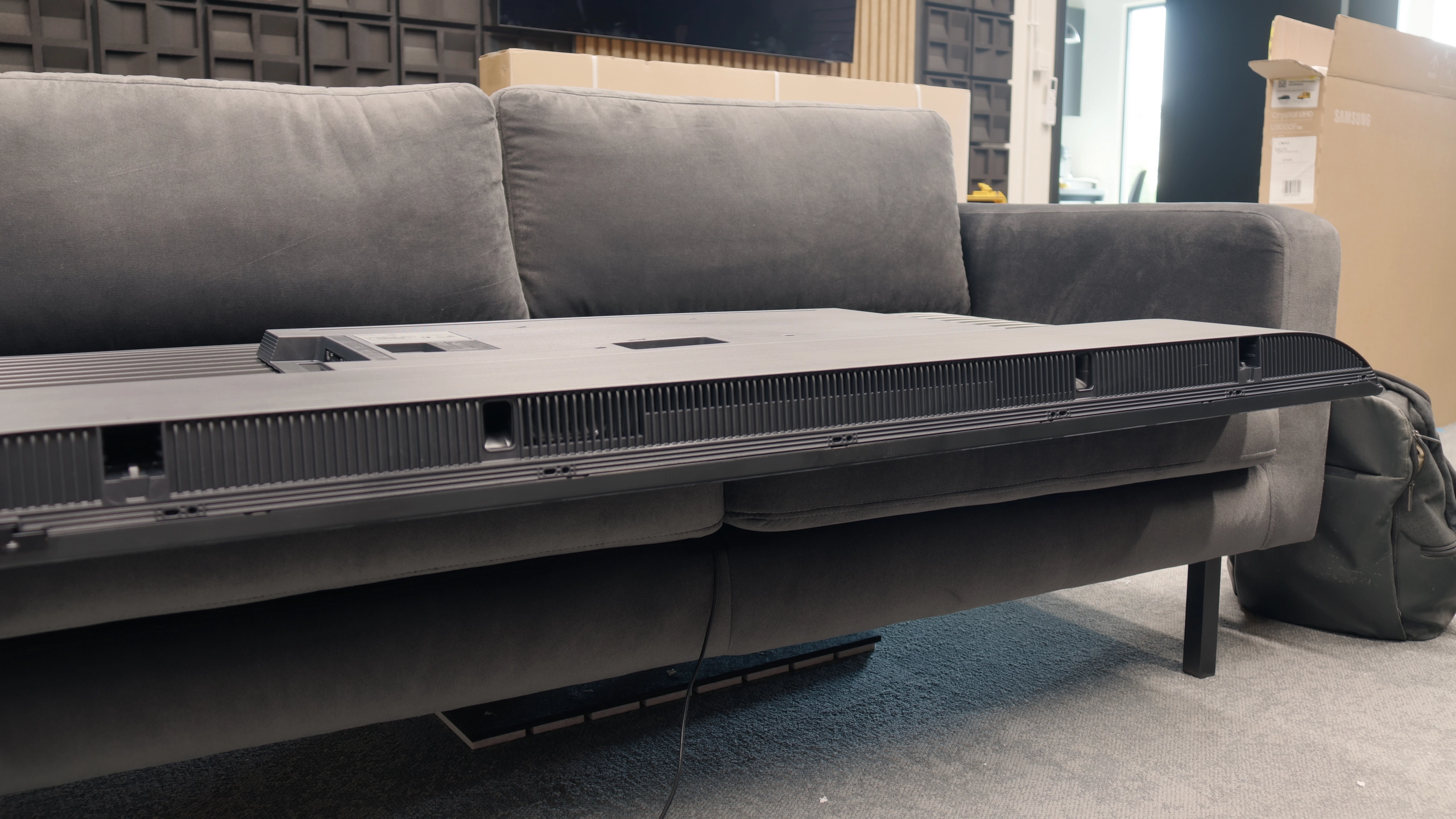
U8092F doesn't pretend to have a home theater onboard. We get a standard set of 2 x 10 W, which sounds decent, but without much excitement, though with a slight bass. For everyday viewing, this audio setup is completely sufficient. We were pleasantly surprised that it was able to play a movie with the built-in Dolby Atmos codec (JOC) – although, of course, we're not talking about true surround sound here.
Sound Quality Test:
Acoustic Measurements
No acoustic data
SAMSUNG U8000F - Panel details
Software version during testing: T-KSU2EFDEUC-0090-1064.4, E2500007, BT-S
Subpixel Structure:
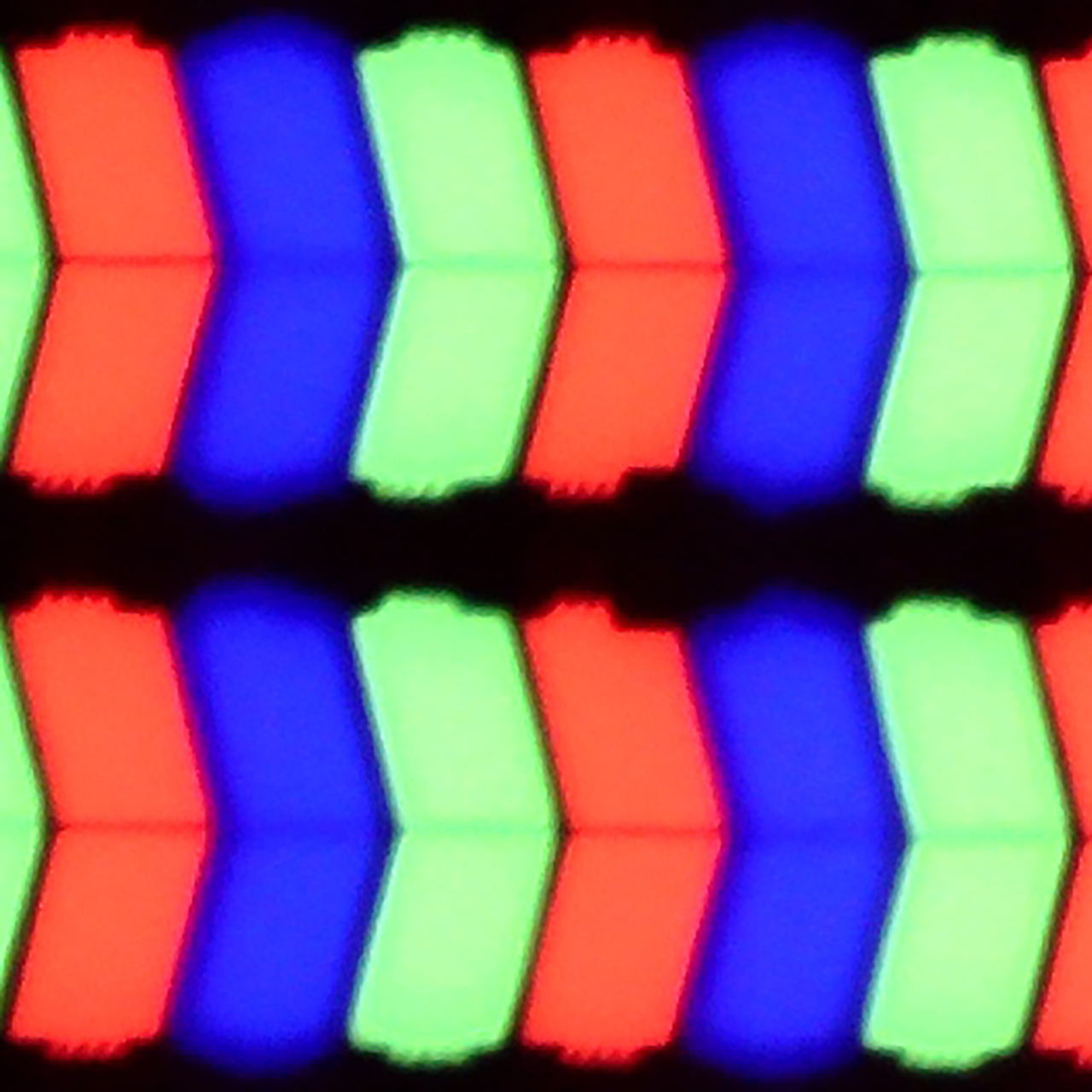
Panel uniformity and thermal imaging:
Backlight Type: White LED

Founder and originator of the "ChooseTV" portal

Journalist, reviewer, and columnist for the "ChooseTV" portal
See articles related to Samsung U8000F (IPS):
2/15/2025
1/16/2025

